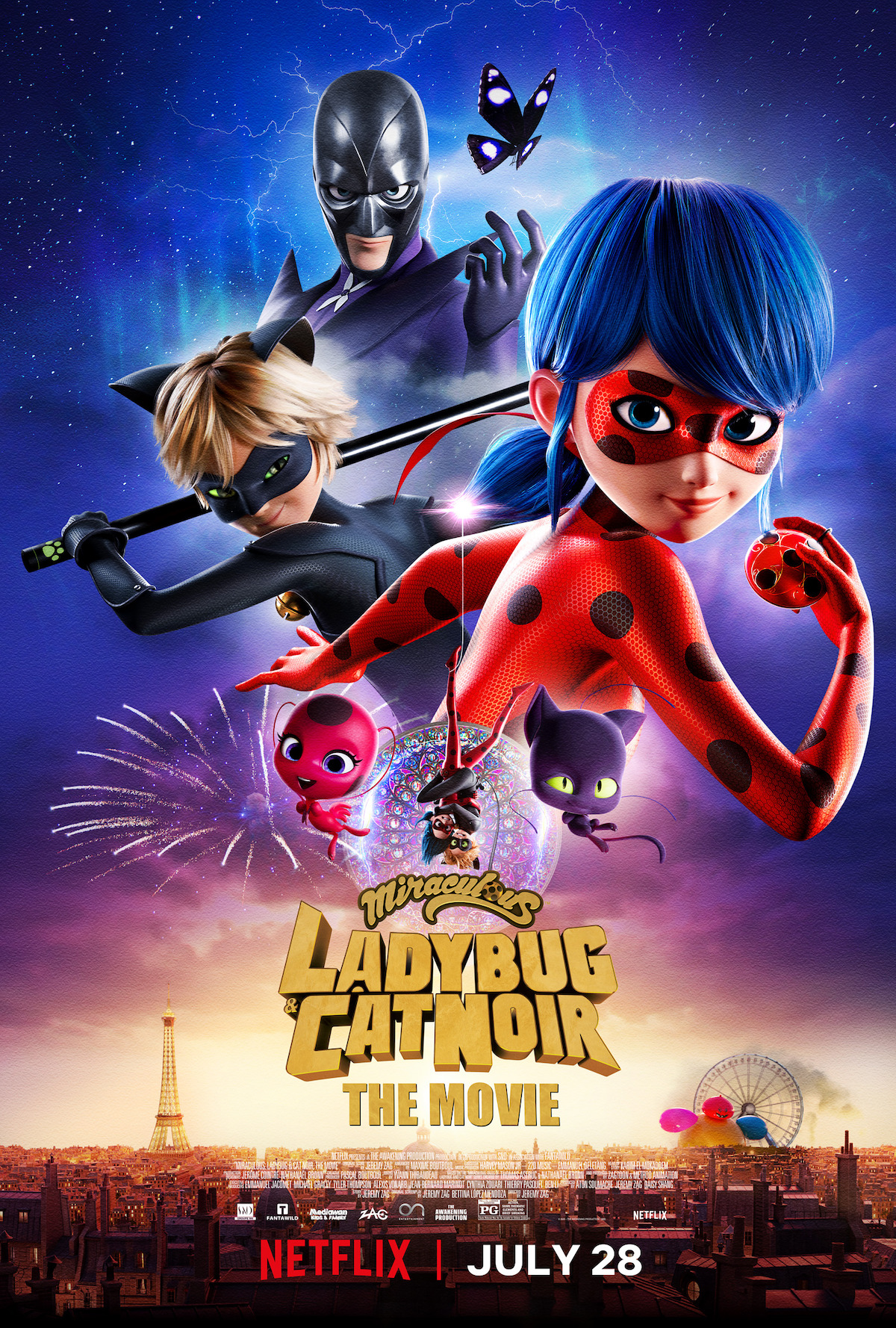Since its announcement in March 2023, the live-action project of the manga/anime ‘Signed Cat’s Eyes’ by TF1 has sparked mixed reactions, both exciting and disappointing. It is thrilling for those who recall the 80s, as it marks France’s first television channel acknowledging an earlier work that was once considered satanic (like other Japanese animations at the time – thank you Ségolène Royal), in addition to Philippe Lacheau’s success with adapting ‘Nicky Larson’ for a French audience. However, given that this project is from the same team behind series such as ‘The Combatants’, ‘Bazar de la Charité’, and Bellefond, it does not generate much enthusiasm. Despite this, TF1 has attempted to reassure audiences by announcing an unprecedented budget of 25 million euros for a French series to bring the Chamade sisters to life. Unfortunately, these assurances seem hollow.
Opinions have become quite divided and even lean towards negative as time progresses. We also watched the series in prime time on November 11th, but we took the time to distance ourselves and rewatch the first two episodes via replay two days later. This was both due to my wife’s tendency to talk a lot when we watch a movie together and for analytical purposes to better understand how certain elements of the series, particularly the action scenes and the feline aspect of the Chamade sisters, could miss the mark so significantly, as these aspects are never found at any point.
Since its announcement in March 2023, the live-action project of the manga/anime ‘Signed Cat’s Eyes’ by TF1 has sparked mixed reactions. On one hand, it is exciting for fans who remember the 80s, as France’s first TV channel is acknowledging an earlier Japanese import that was once considered controversial, similar to other anime from Japan at the time. Additionally, Philippe Lacheau’s successful adaptation of Nicky Larson for a French audience adds to this excitement. However, concerns arise due to the involvement of the creative team behind series like ‘The Combatants’, ‘Bazar de la Charité’, and Bellefond. Despite TF1’s assurance of a substantial 25 million euro budget, public opinion has turned negative over time. The series premiere on November 11th was met with criticism, particularly regarding inaccuracies in the action scenes and the absence of the feline abilities of the Chamade sisters, as depicted in the original manga/anime.
In fact, this live-action adaptation of “Cat’s Eyes” unfolding in Paris finds itself in a precarious position, balancing between a very serious, straightforward approach on one side and a more eccentric, offbeat attempt featuring characters like Elodie Fontan and Gilbert Melki. Perhaps this approach would have been suitable for the entire series instead of attempting to ground it excessively in French realism, almost Parisian, between “bobo” ambiance and “wesh-wesh” undertones. While understanding the Parisian ‘bobo’ aspect is comprehensible, as the series was intended for the international market and a postcard-perfect Paris sells well, the entanglements of the cités are utterly problematic. The scene where Tam (played by the lively Camille Lou) nearly gets knocked over by Assaya, who has become “the girl” (as the term is used in the dialogue with its associated rough tone), for Quentin in the series jarringly contrasts with our perception of such a character. Not only does it lack elegance but it also completely misrepresents the character of Assaya. In the manga and anime, she is a composed, cold character who doubts Quentin’s intentions, suspecting him to be a mole for Cat’s Eyes. She is meant to provide a more intellectual perspective on Quentin’s somewhat naive character, which is entirely undermined here. We have no issue with deviating from the original work, but there are limits not to cross…
In any case, showrunner Michel Catz has received Tsukasa Hojo’s approval to reinterpret the story according to his vision, with the requirement that it revolves around three art thieves whose adventures are interwoven with themes of love and friendship, interspersed with action and humor. Due to language barriers, cultural differences, and varying perspectives on certain situations influenced by local customs, Tsukasa Hojo may not be able to effectively convey the ‘young’ aspect or what could be referred to as a sense of ‘French-hood,’ which is essential for maintaining the overall tone of the series. Given his experience, Tsukasa Hojo should understand that having one’s work reinterpreted, especially within another cultural context, necessitates respect for the original intent and spirit. It remains uncertain whether Japanese fans will be aware of this French production by TF1…
Since its announcement in March 2023, the live-action project of the manga/anime ‘Signed Cat’s Eyes’ by TF1 has elicited mixed reactions. On one hand, it pleases nostalgic viewers from the 1980s to see France’s first television channel giving recognition to an earlier work that was once considered controversial (similar to other Japanese animations at the time, as mentioned by Ségolène Royal), and noting Philippe Lacheau’s success with his adaptation of ‘Nicky Larson’. However, skepticism remains due to TF1’s track record with series such as ‘The Combatants’, ‘Bazar de la Charité’, and ‘Bellefond’. Despite announcing a significant budget of 25 million euros for the production – the largest ever allocated for a French series – public sentiment has become increasingly negative. After watching the series during its prime-time broadcast on November 11th, we revisited the first two episodes via replay over the weekend, partly due to my wife’s tendency to talk during movies and partly for analytical purposes to understand how many elements could have gone awry, particularly in terms of action scenes and the feline characteristics of the Chamade sisters, which are entirely absent.
It is unfortunate because there are intriguing aspects explored in this series, including its origin story and the initial strained relationships between Tam, Sylia, and Alex. This is a commendable approach, especially considering that the three actresses chosen were well-cast. Personally, we have an appreciation for Camille Lou since discovering her in the film ‘Chasse Gardée’, where she performs alongside Didier Bourdon and shines. Constance Labbé and Claire Romain also deliver strong performances.
However, there is a significant issue with the choice of the Chamade sisters’ origin story; their inexperience as confirmed thieves and lack of agility on screen create a noticeable absence of epicness, which is notably missing from these first two episodes intended to attract viewers. The pacing is slow, unengaging, and little happens. A more captivating approach was necessary to assure us about the series’ direction.
“EMPTY BEAUTY”
In an interview, it was mentioned that stuntwoman Chloé Henry handles Tam’s stunts when she is seen from behind, while close-ups featuring Camille Lou are filmed against a green screen, which unfortunately shows through. The difference in color grading between Camille Lou and the background setting is noticeable. This does not shock regular viewers of Julie Lescaut such as Madame Michu and her friends, but it is dishonest to claim that the action scenes are a great success; they are actually one of the series’ biggest weaknesses. Camera angles often lack grandeur, with an overuse of close-ups. Although I understand the production team was limited by time constraints and restrictions imposed by those in charge of the Eiffel Tower, the scenes never feel dynamic or thrilling. Alexandre Laurent, the director, emphasizes long shots following characters from behind, which adds little to the narrative and often disrupts the episode’s rhythm. For example, when Tam pretends to jump off the Eiffel Tower with a parachute, Quentin tries to catch her as she descends the monument. The camera follows him through stairs and elevator, extending a sequence that could have been shorter without losing its impact. This leads to absurd situations, such as the time it takes for the Fluvial Police to be called and reach the scene while Quentin is still exiting the elevator. As for revealing the Arc de Triomphe just two meters from the Eiffel Tower in the shot, even Tom Cruise did not take such a shortcut in Mission Impossible: Fallout.
The rooftop chase scene in Paris observed in episode 2 was indeed filmed by a team on the outskirts of the capital, reflecting a desire for authenticity and practicality. However, the sequence fails to become thrilling or epic. While it’s not necessary to call in parkour specialists given that Yamakazi-style action has become outdated in 2024, one could still envision a more intense chase scenario. Beyond Quentin’s rooftop falls with abrupt cuts, there is a noticeable lack of ambition. Additionally, the nighttime scenes are poorly rendered, with issues such as obstructed camera views, excessive noise in the images, and insufficient lighting. These technical problems raise questions about whether proper planning was conducted for this sequence. The quality is subpar, despite an investment of 25 million euros in the series. Lunaire…
Since its announcement in March 2023, the live-action adaptation of the manga/anime ‘Cat’s Eyes’ by TF1 has elicited mixed reactions. On one hand, it is noteworthy that France’s leading television channel is adapting a work that was once controversially dismissed as satanic alongside other Japanese animations at the time (thanks to statements made by Ségolène Royal). Philippe Lacheau’s success with ‘Nicky Larson’ also offers some hope for this adaptation. However, given TF1’s involvement in series like ‘The Combatants’, ‘Bazar de la Charité’, and ‘Bellefond’, enthusiasm is tempered. To reassure viewers, TF1 announced a substantial budget of 25 million euros for the production, marking it as the largest ever allocated to a French television series. Despite this investment, reviews have been predominantly negative, highlighting issues with action scenes and the absence of key feline elements associated with the Chamade sisters. The adaptation struggles to balance seriousness with eccentricity, particularly in the portrayal of characters like Assaya, who is rendered rough rather than composed as seen in the original work. Additionally, technical problems such as visible green screen effects during close-ups of Tam and poorly executed action sequences that appear slow and undynamic have detracted from the series’ quality. The director’s frequent use of long shots following characters from behind further disrupts the pacing without adding significant value to the scenes. Despite the substantial budget, these shortcomings have resulted in widespread criticism of the series.
Despite this, much of the first two episodes is excessively drawn out and lacks substance, which constitutes its main flaw. Even the first episode at 59 minutes and the second at 55 minutes could have been shortened by about 20 good minutes each without losing any significant content. Everything is unnecessarily stretched, slowing down the pace, and I hope that the remaining six episodes, also lasting 50 minutes, will offer more substance. There’s a lot of frustration with this series that has not yet met the standards set by its original material, which is particularly regrettable given that it seems the authors and those involved in the project aimed to create something meaningful. Some responsibility should also be placed on TF1 for not understanding that a Cat’s Eyes series is about more than sibling squabbles over an €12 café crème in the Saint Germain des Prés area; it also encompasses the central role of acrobatics.
CONCLUSION: SHOULD WE KEEP WATCHING? The launch of this French interpretation of Cat’s Eyes, a production by TF1 and Amazon Prime Video, has been challenging. Despite an evident intention to pay homage to the original, the first two episodes fall short in capturing the thrilling essence that would typically engage viewers.
Have any thoughts?
Share your reaction or leave a quick response — we’d love to hear what you think!

